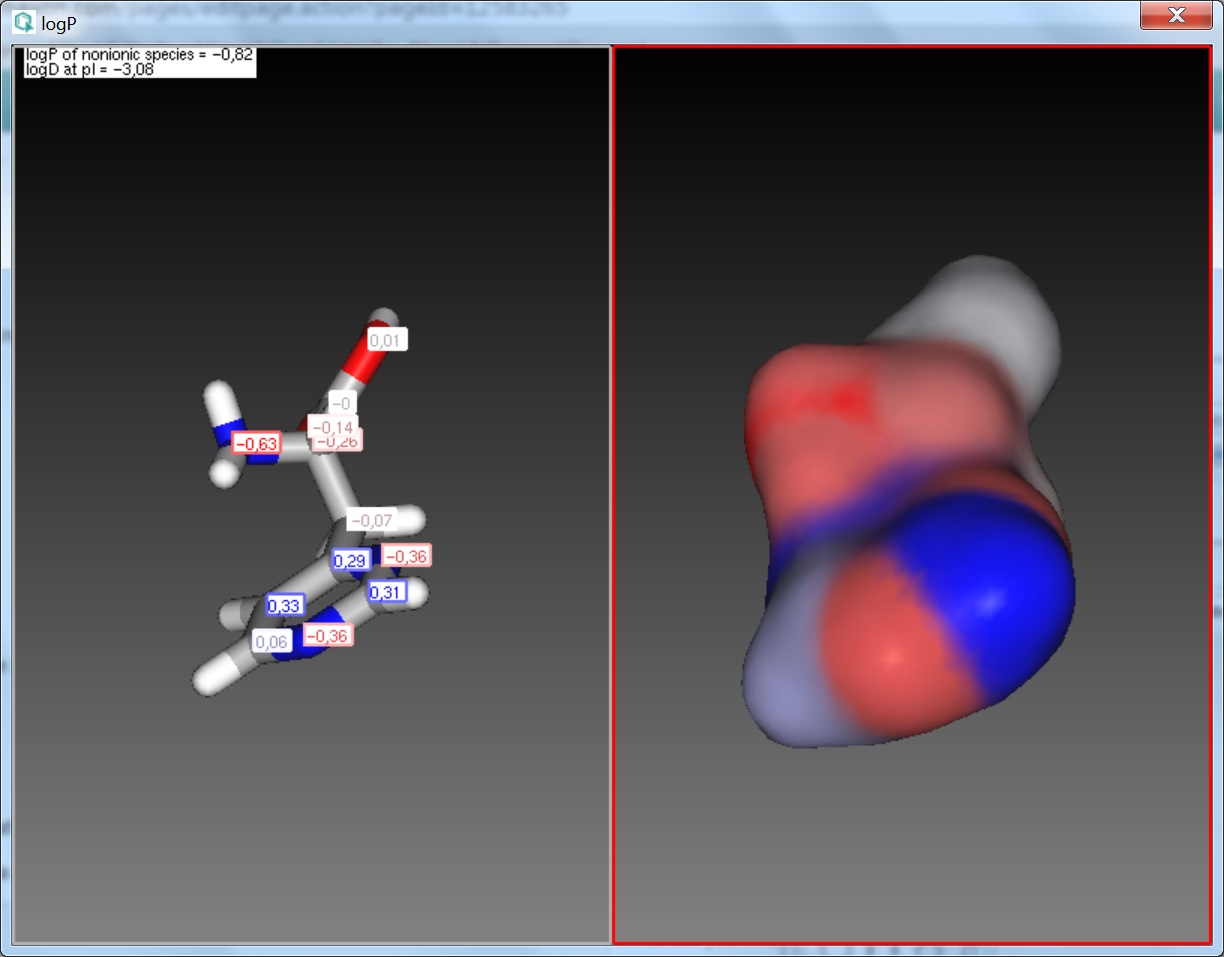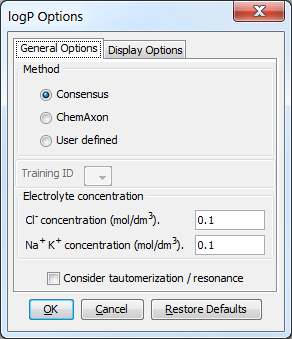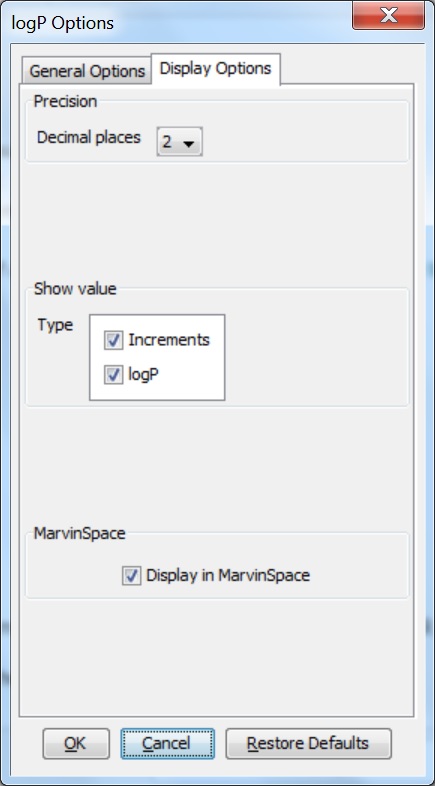logP Plugin
This manual gives you a walk-through on how to use the logP Plugin:
Introduction
The logP Plugin calculates the octanol/water partition coefficient, which is used in QSAR analysis and rational drug design as a measure of molecular hydrophobicity. The calculation method is based on the publication of Viswanadhan et al. The logP of a molecule is composed of the increment of its atoms. However, the algorithm described in the paper was modified at several points:
-
Many atomic types were redefined to accommodate electron delocalization and contributions of ionic forms were added.
-
The logP of zwitterions are calculated from their logD value at their isoelectric point.
-
The effect of hydrogen bonds on the logP is considered if there is a chance to form a six membered ring between suitable donor and acceptor atoms.
-
New atom types were introduced especially for sulfur, carbon, nitrogen and metal atoms.
To find details on logP calculation, see the following page.
The result of the calculation appears in a new window, either in a MarvinView (for a 2D view) window or in a MarvinSpace (for a 3D view) window.

Fig. 1 LogP result window with atomic increments displayed in MarvinView

Fig. 2 LogP result window with atomic increments displayed in MarvinSpace
Options
General Options
Different general options can be set in the logP Options window:
Method
This option defines the method for calculating logP. These can be:
-
Consensus: this method uses a consensus model built on the ChemAxon and Klopman et al. models and the PhysProp database.
-
ChemAxon: this method is based on ChemAxon's own logP model, which is based on the VG method (derived from Viswanadhan et al.). Read more about it here.
-
User defined: if a training set of structures and corresponding experimental logP values is available, it can be used as a database for logP calculations. See the manual page on creating such training sets.
The relation of ChemAxon's logP method to the AlogP and ClogP methods
The Consensus logP method is a unique, in-house developed logP model based on the methods listed above. Comparison-wise, our Consensus logP method is similar (but not identical) to the ClogP method, while our ChemAxon logP method is similar (but not identical) to the AlogP method.
Other options
These options are for refining the logP calculation.
-
Training ID: if the User defined method is selected, this dropdown list becomes active. All created training sets are listed here. Choose the one to apply for the calculation.
-
Electrolyte concentration
-
Cl- concentration: can be set between 0.1 and 0.25 mol/L.
-
Na+ K+ concentration: can be set between 0.1 and 0.25 mol/L.
-
-
Consider tautomerization/resonance: the logP of the major tautomer will be calcutated if enabled.

Fig. 3 logP Options window with the General Options panel
Display Options
Different display options can be set in the logP Options window:
-
Decimal places: setting the number of decimal places for the precision of the result value.
-
Show value: sets which logP values be displayed in the result window. It can be:
-
Increments: calculates and shows the increments for atoms one-by-one.
-
logP : shows just the value of the logP.
-
-
Display in MarvinSpace: the result window opens as 3D MarvinSpace viewer. If unchecked, the results will be shown in a 2D MarvinView panel.

Fig. 4 logP Options window with the Display Options panel
References
-
Viswanadhan, V. N.; Ghose, A. K.; Revankar, G. R.; Robins, R. K., J. Chem. Inf. Comput. Sci., 1989, 29, 163-172; doi
-
Klopman, G.; Li, Ju-Yun.; Wang, S.; Dimayuga, M.: J.Chem.Inf.Comput.Sci., 1994, 34, 752; doi
-
PHYSPROP© database
-
Csizmadia, F; Tsantili-Kakoulidou, A.; Pander, I.; Darvas, F., J. Pharm. Sci., 1997, 86, 865-871; doi